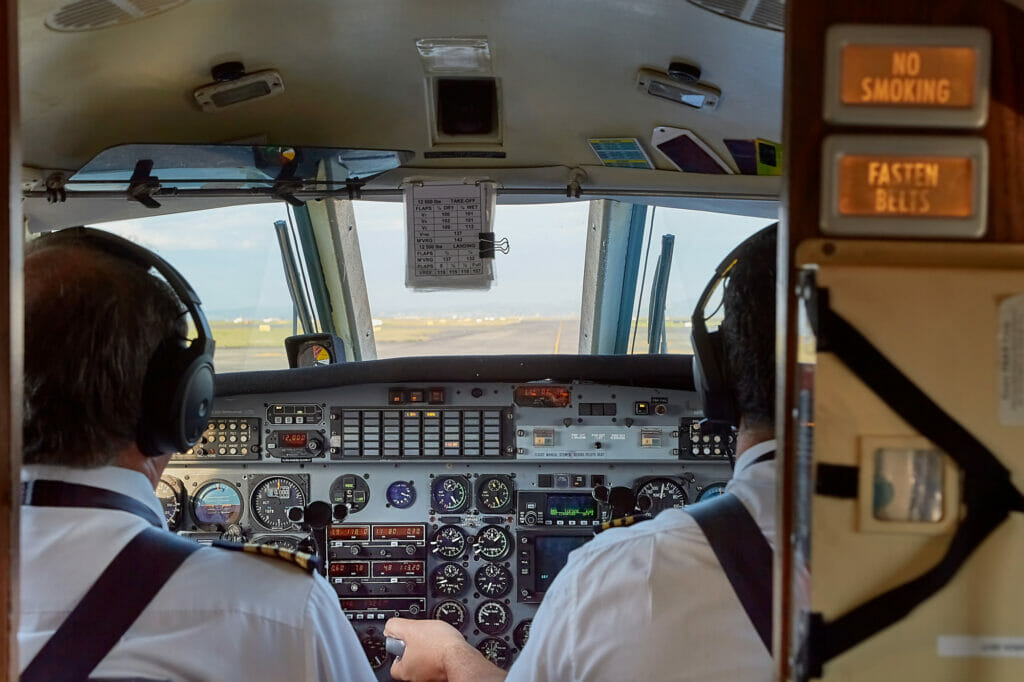Perhaps the most exciting and daunting task of a young pilot’s life is picking their first job as a new commercial pilot. Regardless of your career goal, there is a lot to consider as you begin job hunting for the first time.
What each point comes down to is that you should do what works best for your situation and what meets your needs. Once you earn your commercial license, consult with mentors you can rely on to guide you toward the right choices. There are seemingly endless options, and the best choices can vary widely at different stages of your career.

The fastest way to build time is to work as an instructor, especially for pilots aiming to fly for airlines, time-share companies or other major turbojet operators. In many scenarios, this may be an attractive option because it provides the opportunity to work with a variety of students and adjust to a range of teaching styles, experience that may transfer well into working with others in the airlines.
If you choose to go the instructor route, it’s worth considering what kind of instructor you want to be. Will a simple CFI certification meet your goals? Might it be better to get a CFII or MEI license for the ability to train an even wider range of pilots in a broader range of aircraft and environments? Further, what type of flight school is best? Is the relaxed pace of a Part 61 school better for your style, or do you prefer the structure and regimen of a Part 141 syllabus? Would you prefer to work with other pilots who are also working toward professional, commercial flying?
Perhaps CFI isn’t the best way to go for some pilots. Instead, many choose to serve as pipeline pilots. Like instructing, flying pipeline can serve as a quick way to build hours. However, this route lacks the interaction with other pilots that instructing provides. Are the hours themselves worth this, or is it better to work with other pilots?
Both instructing and pipeline options have the downsides of long, demanding hours at relatively low pay. Location is a critical consideration for both. Consider, for example, choosing certain locations based on weather characteristics if your goal is to build time rapidly versus gaining experience in areas where IFR is more common.
Some pilots may choose to fly for Part 135 commuter airlines to build time. While actual flight time may not come as quickly as it would as a CFI or with pipeline flying, some employers place a high value on having experience flying within airline environments. Exposure to an airline’s standard operating procedures, being able to fly higher-performance aircraft more regularly, and flying into bigger, higher demand airports may be attractive for some pilots.
The biggest drawback to this method will be your ability to build hours quickly. With stricter limits on how much pilots can fly each day, week, month, and year, working for airlines won't allow pilots the rapid-fire flight building that instructing or pipeline flying can provide.
Once you’ve reached ATP minimums and are ready to apply to Part 121 carriers, ask yourself what your end goal is. If your goal is to fly for a major legacy carrier, is a regional airline the best place to start? Is flying for a ULCC a better option? Both options have their benefits and advantages. Regional airlines are more likely to have flowthrough agreements with legacy airlines. Are these alone worth choosing a regional airline? For many, it might be. Airlines like hiring people who already meet their standards so working with a partner regional airline may help boost one’s case, especially if they know they want to fly for a specific legacy airline.
Perhaps a low-cost airline is a better option. Maybe flying bigger jets, like Boeing 737s or Airbus A320s, is worth foregoing the flowthroughs operating 50-seat regional aircraft.
For initial 121 jobs, it’s worth considering base locations and if you are willing to commute. If living on base is a dealbreaker, perhaps it’s worth choosing a specific airline that has a base in or near your city, thus removing the commuting issue.
Your first pilot jobs come down to knowing and meeting your needs as a pilot. Consider which jobs will best meet your goals and help you grow as a pilot in the most beneficial ways. Building connections early and meeting with mentors to discuss your path are among the best ways to ensure you’re on the career path that is best for you.




















































